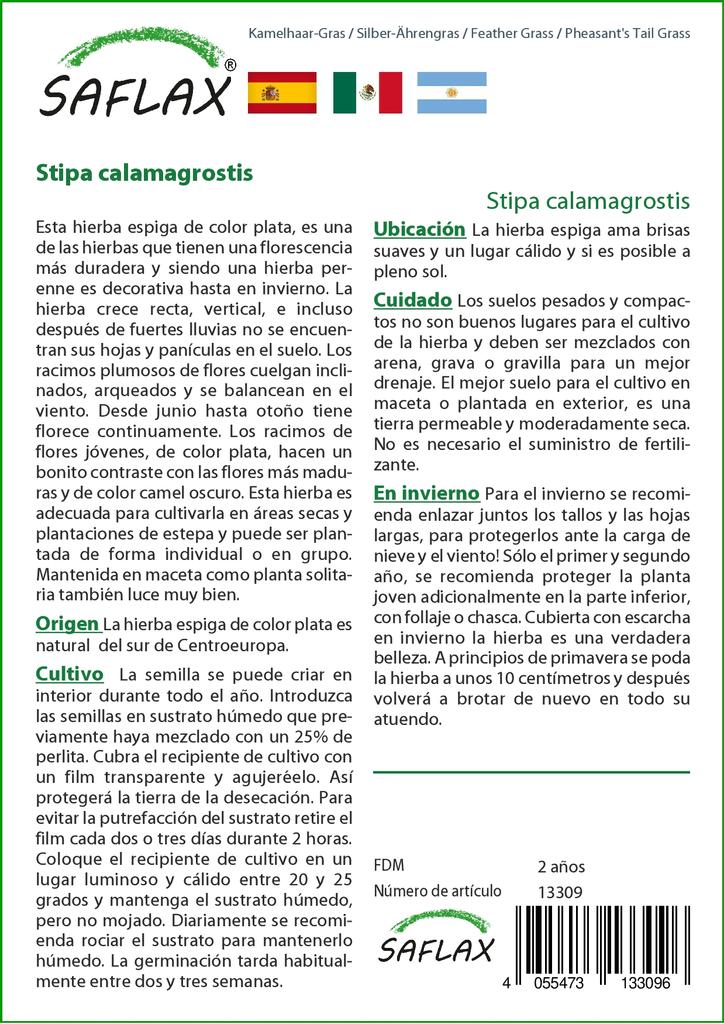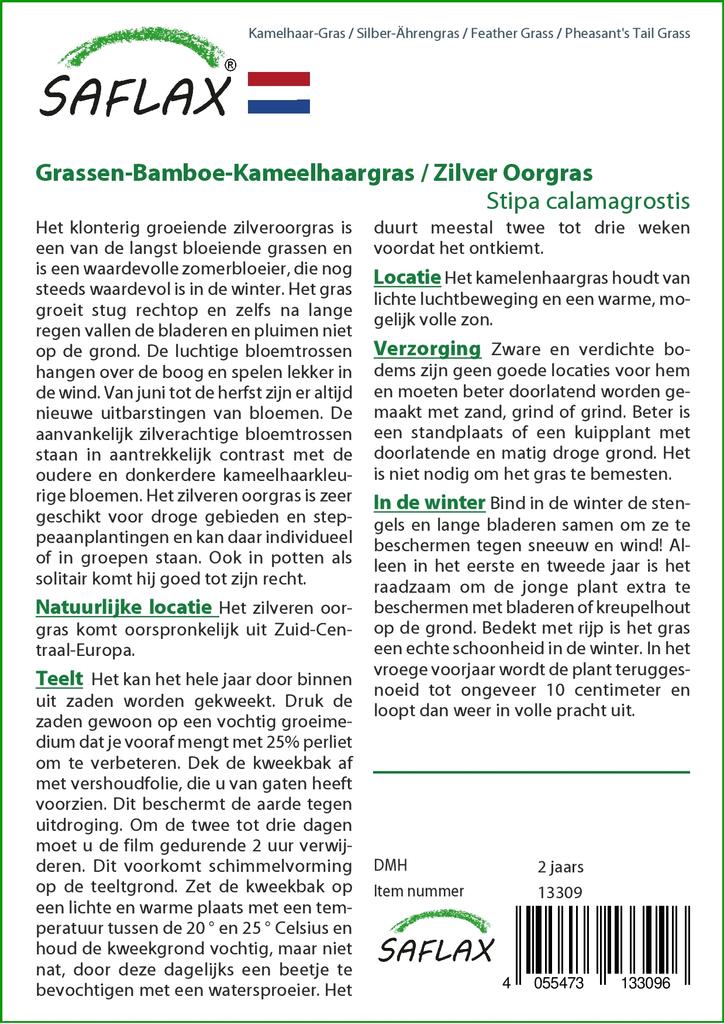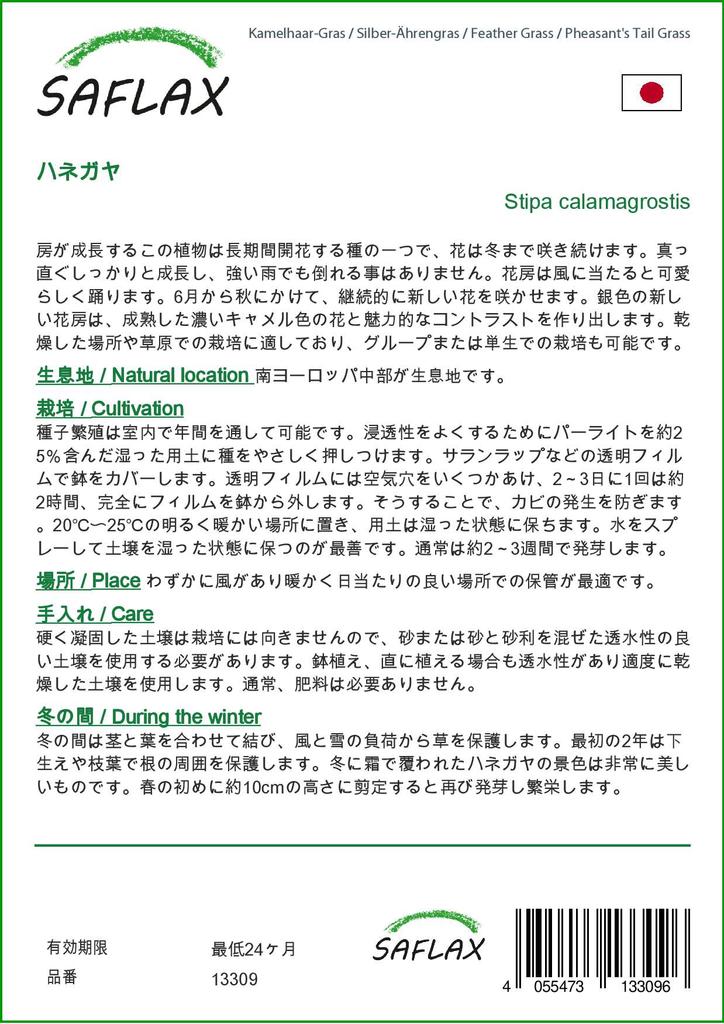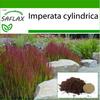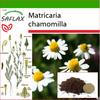Worth knowing:
The tuft-growing Feather Grass is one of the long-blooming grass species and develops a rich blossoming that lasts until winter. It grows firmly upright, and even after strong rain it won’t lie down at all. The feathery flower tufts hanging in bows and dancing nicely in the wind. From June until autumn, it continuously produces new batches of blossoms. The initially silvery, new flower tufts build a charming contrast to the matured and darker camel-coloured blossoms. The Feather Grass is perfectly suited for cultivation in dry places and steppe-plantations, where it can either be arranged in groups or as a solitary plant.
Natural Location:
The Feather Grass has its natural habitat in the southern Middle Europe.
Cultivation:
Seed propagation indoors is possible throughout the year. Gently press the seeds into moist potting compost that ideally contains about 25% of perlite for a better permeation. Cover the seed container with clear film to prevent the earth from drying out, but don’t forget to make some holes in the clear film and take it every second or third day completely off for about 2 hours. That way you avoid mold formation on your potting compost. Place the seed container somewhere bright and warm with a temperature between 20° and 25° Celsius and keep the earth moist, but not wet. The best way to do so, is by daily using the water sprayer to moisten the soil. Usually it takes about two to three weeks until germination.
Place:
The grass likes a slight breeze and a warm, preferably full sunny place.
Care:
Strong and solidified soils are not a good option for the cultivation of the Feather Grass and should be mixed with sand, grit or gravel to make the earth more permeable. Best is a location or a tub with permeable and modestly dry earth. Fertilizing is not necessary.
During the winter:
During winter, you can bind the stalks and leaves together to protect the grass from wind and snow load. Only for the first two years you might want to frost-protect the plant with a layer of brushwood or foliage around the root area. When covered with hoarfrost, the Feather Grass makes a particular beautiful sight during winter. In early spring, the plant is to be cut back to around 10 cm of height, and will then sprout again in all its glory.
Picture credits:
- © © Piet Oudolf - About © : Contact SAFLAX - http://www.saflax.de/copyright
- © Frank Laue - © Saflax - http://www.saflax.de/copyright
- © Frank Laue - © Saflax - http://www.saflax.de/copyright
- © © Piet Oudolf - . -
- © - -
- © - -
- © - -
- © - -
- © - -

















